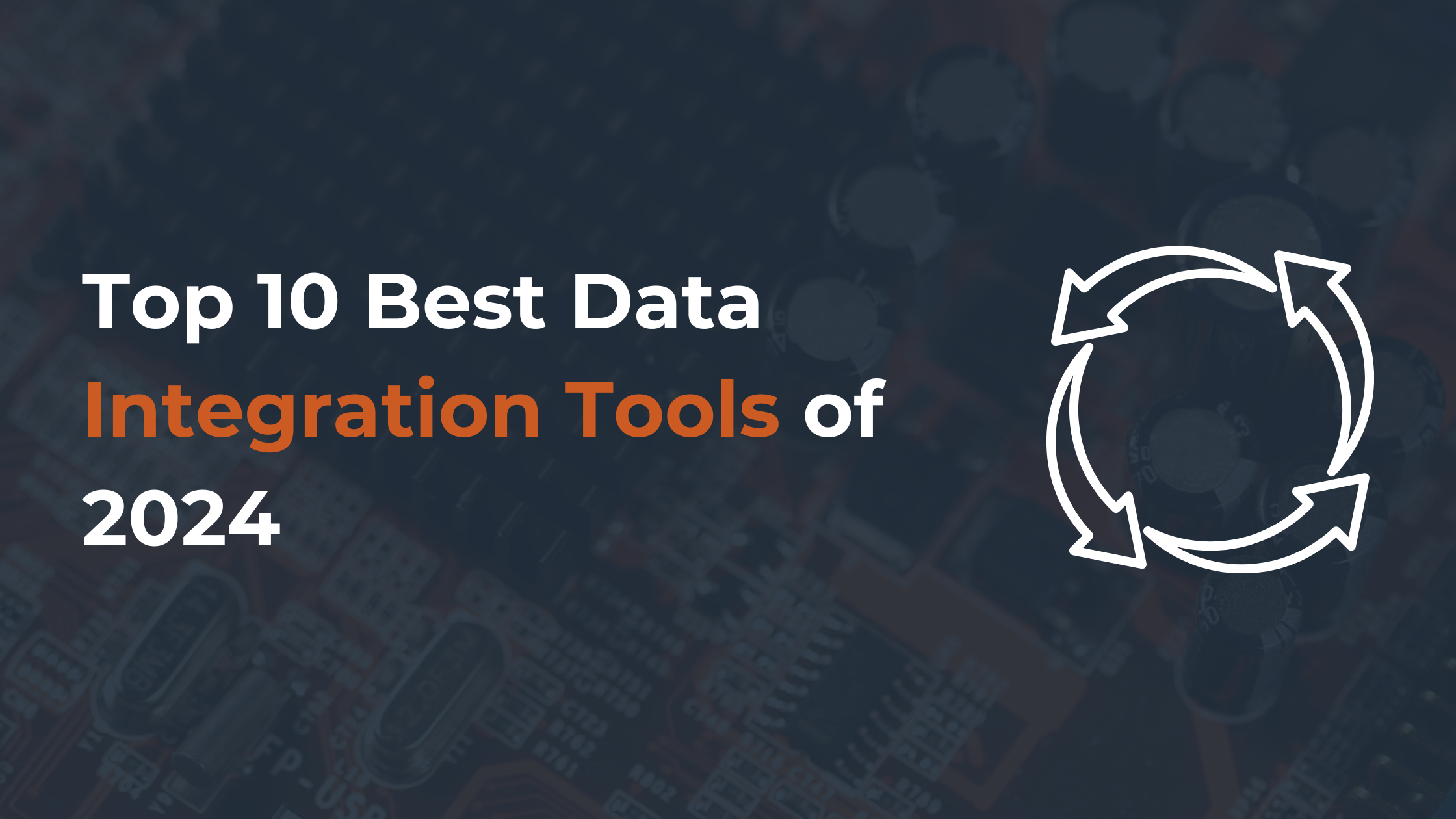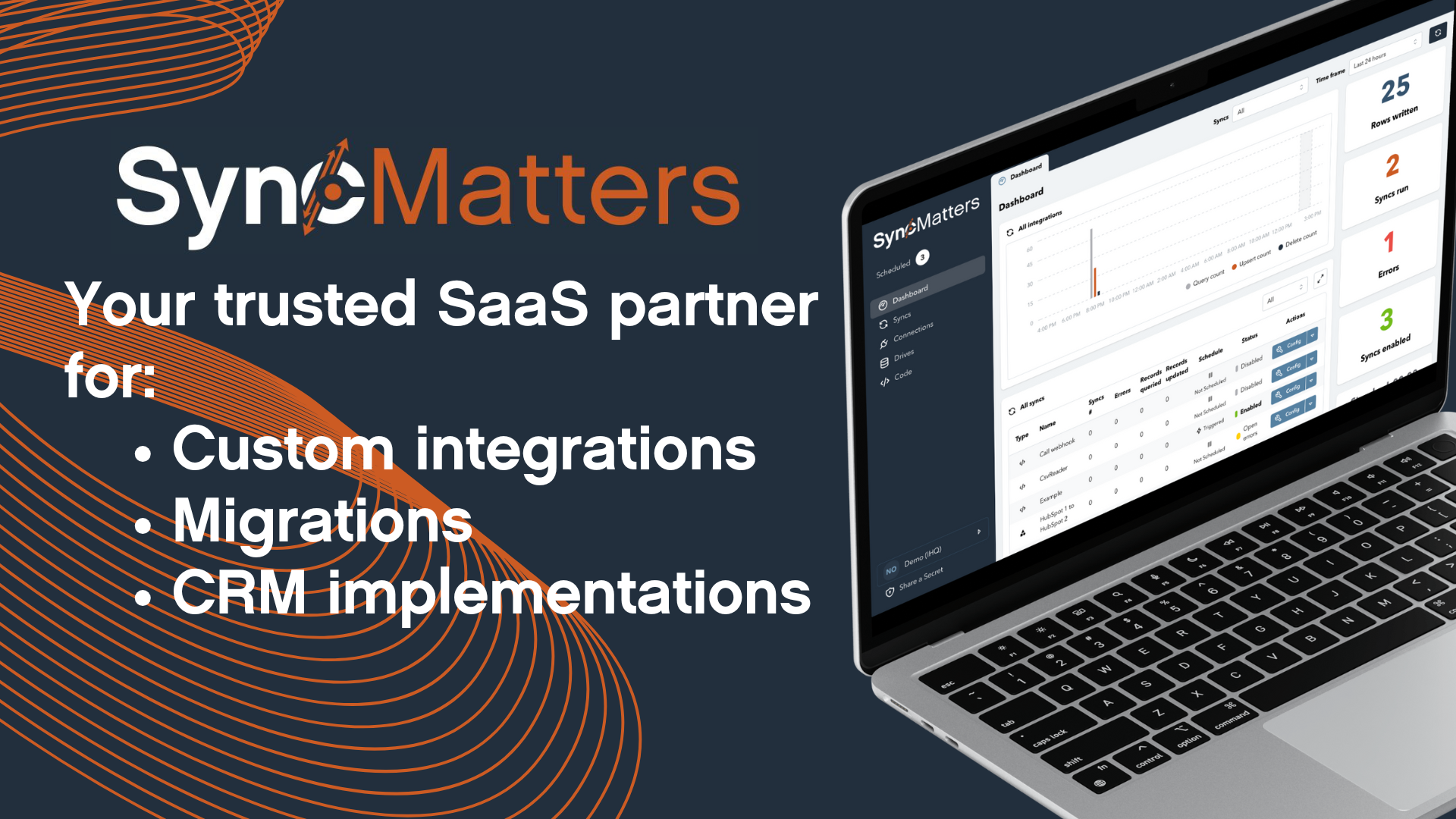What are data integration tools?
Data integration tools are software designed to gather, manage, and convert data from different sources into a single format for analysis and reporting. They are commonly used by data engineers, business analysts, and IT professionals to combine information from multiple databases, applications, and systems, providing useful insights.
Businesses use tools for data integration to automate data collection and integration processes. This helps organizations get a complete view of their operations, improve decision-making, and make business processes more efficient. These tools offer features like data transformation, real-time data integration, and data quality management, enhancing overall functionality and value.
How do data integration tools work?
Modern data integration platforms have a user-friendly interface that simplifies the entire integration process. Drag-and-drop interfaces allow users to create fully automated data pipelines without coding.
Here's a step-by-step overview of how typical software integration tools work:
- Data extraction: These tools have connectors or adapters that link seamlessly to various data sources like databases, files, APIs, and cloud applications. Users can set up connections and extract needed data without writing queries or code.
- Data transformation: After extraction, built-in transformation features let users manipulate and enhance the data quality. Transformations include merging, joining, and normalizing data. Some projects perform transformations after loading data into the destination (ELT), which modern tools also support.
- Data mapping: The graphical interface of data integration tools aids in data mapping, allowing users to match data elements from different sources to the corresponding fields in the target data model. This ensures proper integration and relationships between data from various sources.
- Data loading and integration: Once the data is transformed and mapped, the tool loads it into the target destination. Most tools support different loading methods, such as batch processing and real-time data streaming.
- Data validation: Many tools include data validation features to verify the accuracy and completeness of the integrated data. Users can set up validation rules to ensure the data meets specific criteria or business rules.
10 Best Data Integration Tools
Here’s an overview and data integration tools list with powerful features and capabilities:
1. SyncMatters
SyncMatters is an integration platform as a service (iPaaS) for integrating data, transferring data, and managing data in CRM systems.
With a focus on supporting over forty-five different CRMs, SyncMatters offers features that allow you to move data, transform data, adjust data formats, and more. As one of the top data integration vendors, SyncMatters guarantees that data flows smoothly between platforms, enhancing operational efficiency and data accuracy.
Key Features:
- Supports integrations for 45+ CRMs: For example, it can integrate with popular solutions like HubSpot, Salesforce, and Microsoft Dynamics.
- Automapping and custom object creation: Reduces time spent on the integration process and manual mapping efforts.
- Data filtering and advanced mapping options: Provides flexibility in handling complex data scenarios.
- Ideal for one-time and repeated migrations: Supports both project-based and ongoing integration needs.
- B2B focus, perfect for CRM partners and agencies: Tailored solutions for business partners and service providers.
Why Choose SyncMatters? As a leading data integration provider and one of the best data integration tools for sales, marketing, and ecommerce tools, SyncMatters provides great support and customization for CRM systems, perfect for businesses looking to enhance their CRM data integration processes. With a user-friendly interface and comprehensive features, it can handle even the most complex integration tasks efficiently.
2. Zapier
Zapier is one of the well-known big data integration tools that allows organizations to connect apps and automate workflows effortlessly. Zapier automates tasks, saving time for important activities with its easy interface and app support.
Key Features:
- Connects over 3,000 apps: For instance, Google Workspace, Slack, and Trello are some of the most common ones.
- Easy-to-use interface with no coding required: Suitable for users of any technical level.
- Extensive library of pre-built integrations (Zaps): Easy to set up for common workflows.
- Workflow automation and multi-step Zaps: Enables the development of complex automation scenarios.
Why Choose Zapier? Zapier is ideal for Small and Medium Enterprises that need to integrate their activities but lack technical expertise. The vast app ecosystem and intuitive interface make it easy to create powerful integrations.
.png?width=500&height=156&name=mulesoft%20logo%20(1).png)
3. MuleSoft Anypoint Platform
MuleSoft Anypoint Platform is one of the top data integration tools known for its comprehensive API management capabilities. The tools on this platform assist large companies with intricate integration requirements. They enable companies to design, create, deploy, and manage APIs.
Key Features:
- Robust API design and management tools: Facilitates the creation, deployment, and management of APIs.
- Comprehensive integration platform for enterprise needs: Supports various integration scenarios, including cloud, on-premises, and hybrid environments.
- Secure and scalable: Ensures data security and can handle large volumes of data efficiently.
- Extensive connectors and integration templates: Speeds up the integration process with pre-built solutions.
Why Choose MuleSoft Anypoint Platform? Organizations requiring a scalable and secure integration solution with advanced API management capabilities recommend MuleSoft Anypoint Platform. Its comprehensive toolset and enterprise-grade features make it one of the top enterprise integration tools.

4. Informatica Cloud Data Integration
Informatica Cloud Data Integration is a powerful data integration tool that offers advanced capabilities for integrating cloud and on-premises applications. Ideal for large-scale integration projects, this tool boasts numerous connectors and the ability to manage intricate data transformations.
Key Features:
- Cloud-native integration platform: Optimized for cloud environments with high availability and scalability.
- Wide range of connectors and data transformation tools: Supports various data sources and complex transformations.
- Scalable and secure: Handles large data volumes and ensures data security.
- Real-time data integration and synchronization: Keeps data up-to-date across all systems.
Why Choose Informatica Cloud Data Integration? Informatica is suitable for organizations needing robust data integration software that can handle complex data scenarios and large volumes of data. Its design allows it to grow and work well, making it a top tool for connecting data in today's systems.

5. Boomi
Boomi is a flexible tool for connecting different apps and data sources, making it easy to integrate them. Its visual interface simplifies the integration process, enabling businesses to connect applications, synchronize data, and automate workflows efficiently.
Key Features:
- Visual interface with drag-and-drop functionality: Simplifies the creation of integrations with minimal coding.
- Supports cloud, on-premises, and hybrid environments: Flexible deployment options to suit different needs.
- Extensive library of connectors: Integrates with a wide range of applications and data sources.
- Real-time data synchronization and automation: Ensures data consistency and streamlines processes.
Why Choose Boomi? Boomi is a great choice for organizations that need a flexible and user-friendly integration platform. It can handle a variety of integration needs effectively. Boomi is easy to use and can adapt to different requirements.
Organizations can rely on Boomi for seamless integration solutions. The visual interface and variety of connectors make it user-friendly for people with varying technical skills. This makes it one of the top integration tools on the market.

5. Jitterbit
Jitterbit gives you a platform that enables you to design, build, and manage APIs for integration in one place. The easy layout and templates help organizations connect systems and manage data flow within the organization effectively.
Key Features:
- API integration and management in one platform: It helps in the integration as well as the management of APIs.
- Intuitive design tools and pre-built templates: Easy-to-use design tools and templates make integration easier for users.
- Real-time integration and data synchronization: Ensures data is valid in all the related systems.
- Comprehensive support for various applications: It has extensive connectivity options to other enterprise applications and data sources for integration.
Why Choose Jitterbit? Jitterbit is a great choice for the organization that aims to improve the integration workflows and manage APIs effectively. The features are great and the interface is user-friendly, making integration simple and efficient.
7. Workato
Workato is a platform that helps automate business processes by integrating applications using both code and non-code methods. It helps organizations work faster and more efficiently by providing pre-made connections and instructions, saving time.
Key Features:
- Low-code/no-code platform with extensive pre-built connectors: Reduces the dependence of the manager on technical knowledge.
- Intelligent automation and workflow capabilities: Smart automation and workflow features can improve the efficiency of tasks in any business organization.
- Supports complex integration scenarios: Can handle and transform the processes and data.
- Scalable and secure: It improves the security of the data and can also help in the growth of a business.
Why Choose Workato? This one of the data integration providers is good for organizations that want to improve processes but can't hire many IT staff. This is easy to use because it has low code/no code features and automation options.

8. Tray. io
Tray.io gives a highly flexible integration platform with enhanced automation to assist organizations in handling their integration requirements. It includes a visual workflow builder and many connectors to integrate various applications and operations in the business.
Key Features:
- Visual workflow builder: It helps to set up complex workflows with little or no coding at all.
- Connectors: The tool has a wide variety of connectors and can work with many different applications and data sources.
- Adaptable integration platform: Works well in various business settings and can adjust as businesses evolve.
- Advanced automation capabilities: It helps in optimizing some functions and enhances the efficiency of the operations.
Why choose Tray.io? Tray.io is a useful tool for managing relationships with different applications and services. This tool offers a visual builder and automation features that enable users to customize it for various integration needs.

9. SnapLogic
SnapLogic is an integration platform which has the capability of application integration, data integration and API management. It uses Artificial Intelligence to easily connect and manage systems and processes for businesses.
Key Features:
- Unified platform for application, data, and API integration: It is a complete solution to many integration problems.
- AI-driven integration and automation: Enhances efficiency and reduces the likelihood of the need for human input.
- Extensive library of pre-built connectors and templates: Speeds up the integration process.
- Real-time data integration: This ensures that all systems have current data.
Why Choose SnapLogic? SnapLogic is good for organizations that want one platform with AI for integration. The platform's versatility allows users to use it in different integration scenarios, which is useful.

10. Talend
Talend is an open-source company providing cloud integration tools for various needs. Their robust ETL solution helps organizations handle, transform, and load data from different sources into the required format.
Key Features:
- Open-source platform with robust ETL capabilities: It offers many options and is highly flexible.
- Supports a wide range of data integration scenarios: Services include data transfer, conversion, transformation, and cleansing.
- Extensive library of connectors and components: It links with various databases and programs.
- Real-time data integration and processing: It enhances on data accuracy and update.
Why Choose Talend? This one of the best cloud data integration tools is ideal for any organization in the market for a robust and scalable ETL-based data integration solution. You can use it for various data integration tasks because it is an open-source tool with numerous features.
Types of Data Integration Tools
There are various types of data integration tools available, including on-premise, cloud-based, proprietary, and open-source options. Here's a brief overview of each type:
- On-Premise: These tools are installed on a private cloud or local network, with integrations managed by internal IT using in-house software. The drawback is the cost of maintaining both the infrastructure and the IT department.
- Cloud-Based: These tools utilize the cloud to integrate multiple data sources. For many businesses, cloud-based solutions are the most cost-effective way to handle their data integration needs.
- Proprietary: These enterprise-level tools are designed to meet specific business requirements but are often too expensive for smaller businesses to afford.
- Open-Source: These data integration products have publicly available source code, allowing contributors to make edits and users to access the platforms for free. This eliminates the need for costly proprietary enterprise solutions.
Main Features to Consider in Data Integration Tools
Here are the key features to look for in data integration applications:
Connectivity to multiple data sources
This feature allows the tool to connect with various data sources, ensuring it can pull data from cloud services, on-premises databases, and other locations.
Data transformation
This feature is essential for converting data into a consistent format. It ensures compatibility across different systems and maintains uniformity in reporting and analysis.
Real-time integration
This feature enables continuous data flow between systems, which is crucial for operations that require up-to-the-minute data, such as dynamic pricing or inventory management.
Data quality management
Vital for identifying and correcting data errors or inconsistencies, this feature maintains data integrity, ensuring accurate decision-making.
ETL and ELT support
Supporting both ETL (Extract, Transform, Load) and ELT (Extract, Load, Transform) processes provides versatility in data preparation and loading, optimizing performance based on project needs.
Comprehensive security measures
Robust security features protect sensitive data during integration, ensuring compliance with data protection regulations and safeguarding business intelligence.
User-friendly interface
An intuitive interface makes business integration software accessible to users of all skill levels, simplifying the data integration process and enabling broader participation in data-driven initiatives.
Analytics and reporting tools
Integrating analytics and reporting capabilities allows users to gain insights directly from the tool, streamlining the process from data integration to decision-making.
High performance and scalability
High performance ensures swift data processing, while scalability allows the tool to handle increasing data volumes efficiently, maintaining quick processing times as data grows.
Benefits of Using Data Integration Tools
With the influx of data from multiple sources, businesses must manage the five Vs of data—value, variety, velocity, veracity, and volume. Here’s how the best integration tools benefit businesses:
Enhanced decision-making
Data integration tools help create a Single Source of Truth (SSOT) with accurate and up-to-date information, significantly improving decision-making processes. These tools also allow businesses to extract and analyze specific data, like customer preferences, leading to better-targeted marketing campaigns and personalized sales strategies.
Automated business processes
These tools automate various business processes, such as customer onboarding and order fulfilment. They enable automatic data transfer from multiple sources into a central location, ensuring that customer details are updated across all relevant systems in real time. This means new customer information is automatically synchronized across systems during interaction.
Cost reduction
Multiple data systems can lead to scattered data, inefficiencies, and duplication of efforts, increasing costs. Software integration solutions eliminate the need for redundant data systems, reducing costs associated with labour, infrastructure, data errors, inefficient decision-making, and customer acquisition and retention.
Improved customer service
A centralized data repository helps businesses better understand individual customer needs and preferences. Data-driven insights enable tailored customer interactions, enhancing customer service. For instance, customer service representatives can access a customer’s entire interaction history with the company, allowing them to address inquiries with context and empathy.
Better compliance and security
Centralizing data allows businesses to implement robust data governance practices and comply with regulations like GDPR or HIPAA. Data integration companies maintain comprehensive data lineage and history, generating detailed reports on the data journey from source to destination. They also offer features like access controls, data encryption, and auditing capabilities, providing extra protection for sensitive data and ensuring consistent data tracking for regulatory compliance.
Increased agility and collaboration
Consolidating data from various sources into a unified view improves data accessibility across the organization. This allows stakeholders to monitor market metrics and respond to changes quickly. Additionally, customer data integration software facilitates seamless data sharing and collaboration, breaking down information silos across departments.
How to choose a data integration tool?
When shortlisting, trialling, and selecting customer data integration tools, consider the following:
1. Identify the problem
Start by determining the specific data integration issue you need to address. This helps clarify the features and functionality the tool must have.
2. Determine users
Consider who will use the platform and how many licenses you'll need. Decide if it will be used by just the data team or the entire organization. This will help you prioritize ease of use for everyone or speed for technical users.
3. Check compatibility
Identify which tools you're replacing, which ones will remain, and what needs to integrate with the new tool. This includes your current data infrastructure, various data sources, and your overall tech stack. Determine if you need to integrate multiple tools or if one consolidated tool can replace several others.
4. Focus on outcomes
Think about the results the tool needs to achieve for success. Consider the capabilities you want to gain or improve and how you will measure success. Comparing tool features is important, but focusing on desired outcomes will save time.
5. Assess organizational fit
Evaluate how the tool will work within your organization’s workflows and delivery methods. Identify what's working well and what issues need addressing. Remember, each business is unique—don't assume a popular tool will necessarily be the right fit for your organization.
Conclusion
Selecting the correct data integration tool is crucial for improving business operations and ensuring smooth data transfer between systems.
The top tools for integration offer a variety of features. These tools are suitable for both small businesses and large enterprises. They can meet your specific needs.
SyncMatters leads the pack with its comprehensive CRM integration and migration solutions, setting a high standard for the industry.
Assess your needs and choose the tool that fits your business goals for a successful data integration plan.








